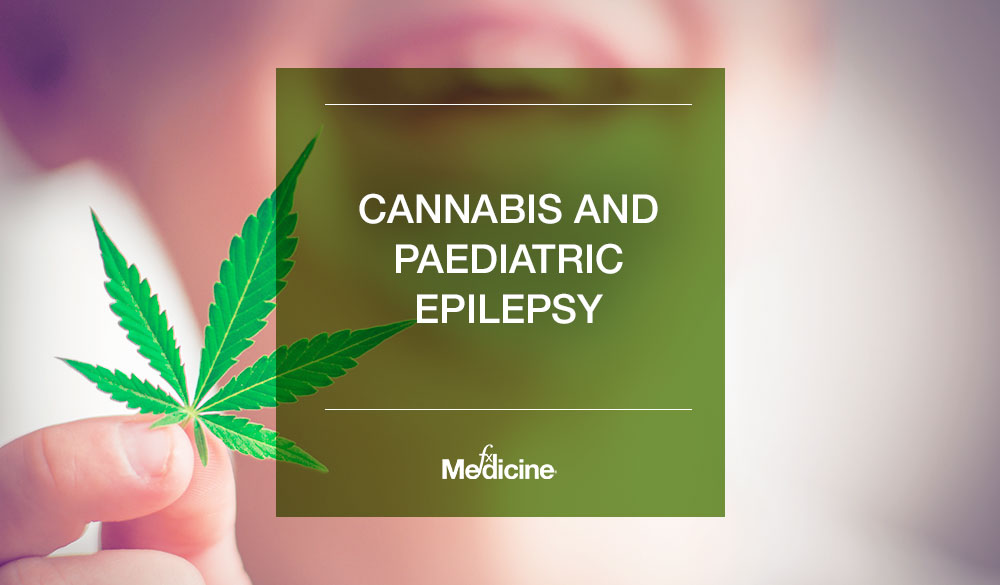Since the passing of the Australian Federal government’s Narcotic Drugs Amendment Bill in February 2016, much has been done, both here and overseas, to investigate the anticonvulsant activity of the Cannabis genus. Such research includes taxpayer-funded clinical trials and a great deal of pre-clinical research, particularly in the area of intractable epilepsy, including conditions such as Dravet and Lennox-Gastaut syndromes. While evidence from these trials is certainly promising, research is continuing to investigate all of the active phytochemical constituents in the plant that may be responsible for this effect. Challenges still facing Australian patients and their families who wish to access cannabis-based therapies for epilepsy include the task of finding a supportive neurologist to prescribe it and, perhaps more significantly, overcoming the substantial financial hurdles of being able to afford legal, quality-assured cannabis-based medicines.
The phytochemistry of the Cannabis genus is diverse and complex; over 100 cannabinoids and 200 terpenes are characterised across the various Cannabis species and hybrids.[1] Currently, of greatest research interest in epilepsy is the terpenophenolic cannabinoid known as cannabidiol (CBD), which demonstrates a wide range of pharmacological actions, including anti-inflammatory,[2] neuroprotective, antioxidant,[3,4] anticonvulsive,[5] anxiolytic[6] and antidepressant activities.[7] CBD has a well-established safety profile and does not affect the mind in the same way that the more psychoactive tetrahydrocannabinol (THC) does.
While CBD is stealing the show in the current research stakes with epilepsy, the propyl analog of CBD, cannabidvarin (CBDV), may share a synergistic activity with CBD, as it also demonstrates a noted anticonvulsant activity in animal models.[8,9] Further, research into tetrahydrocannabivarin (THCV), the propyl homolog of THC, has also confirmed anti-inflammatory, anticonvulsant,[10] antioxidant and neuroprotective effects in animal models.[1,11]
Based on such pre-clinical research, there are an increasing number of clinical trials suggesting that Cannabis phytochemistry, specifically Cannabidiol (CBD), may show promise in drug-resistant epilepsy. A prospective open-label cohort study published in August 2018 had children (n=40) receive 25mg per kg per day of CBD as adjunct therapy, and was conducted through the NSW Compassionate Access Scheme.[12] Results were suggestive that CBD as an adjunct treatment in drug-resistant epilepsy showed subjective benefit for overall health and had a manageable adverse event profile.[12]
More significantly, rigorous clinical studies demonstrate similar supportive findings. In a double-blind, randomised, placebo-controlled trial investigating the use of a CBD-rich extract (Epidiolex®) alongside standard antiepileptic drugs (AEDs) for drug-resistant seizures in Dravet Syndrome, which was published in the New England Journal of Medicine,[13] 120 children and young adults utilised 20mg per kg per day or placebo over a 14-week treatment period. Results demonstrated that 5% of participants in the intervention group became seizure-free and nearly half saw a 50% reduction in convulsive seizure frequency compared to 27% with placebo.[13] Approximately 67% of caregivers of children in the CBD group reported improvement in their child’s overall health utilising the Caregiver Global Impression of Change scale compared to 34% in the placebo group (p=0.02).[13] Adverse events were reported at 93% in the CBD group and 75% in placebo; common adverse events reported in the CBD group were fatigue, fever, somnolence, anorexia, diarrhoea and emesis with eight patients withdrawing from the trial. Interestingly, it has been posited that adverse effects related to the CBD group may have been attributable to a large number of trial participants (65%) being on clobazam. A study conducted in 2015 demonstrated a known interaction whereby concurrent CBD administration can significantly increase levels of the active metabolite of clobazam, N-desmethylclozabam (i.e. norclozabam), thus increasing potential drug adverse events.[14] CBD is a known inhibitor of Cytochrome P450 enzymes, specifically 3A4, 3A5, 2D6 and 2C9,[15-17] which is suggestive that this may be a confounding factor in the adverse effect reporting of this trial.
An earlier open-label interventional trial conducted in 2015 investigated CBD in children (concurrently taking AEDs) with treatment-resistant epilepsy over a 12-week period.[18] Dosage started at 2-5mg CBD per kg per day and was titrated up until either intolerance, or a maximum dose of 25-50mg per kg per day. Results published in The Lancet suggest that the median reduction in monthly motor seizures over the course of the trial was 36.5%, with the median monthly frequency of seizures being 30 at baseline and 15.[8] over the trial period. Adverse events affected 79% of the trial participants.[18] Examples of adverse events included fatigue, diarrhoea, anorexia, somnolence and convulsion (nine patients reported status epilepticus).[18]
This emergent clinical evidence has driven the Therapeutic Goods Administration to publish a guidance document for the use of medicinal cannabis in the treatment of epilepsy in paediatric and young adult patients in December 2017. Recommendations of this report suggest that CBD should be used as adjunctive therapy to existing AEDs in children and young people up to the age of 25 years, with the main aim being improving quality of life and reducing seizure frequency. Despite such government publications, a growing evidence base and the now legal status of CBD preparations for use in Australia, there is an underwhelming appetite for prescription by specialist medical practitioners as many are seeing this as a treatment of last resort.
To the observant reader, one would have noticed the relatively high doses of CBD that are administered in clinical trials. Existing legally available products in Australia, which are largely imported from overseas due to Australia’s still embryonic industry, are incredibly expensive. The cost of such treatment can be staggeringly high due to lack of government financial support for what is considered an unapproved medicine. Carol Ireland, CEO of Epilepsy Action Australia and a tireless advocate for patients in this space, has stated that some of her patients have been quoted between $30,000-$40,000 a year to obtain a legal product at the dose required to assist their children, which is a prohibitive cost to the majority of Australian families. Understandably, such exorbitant cost, coupled with sheer desperation and lack of optimal pharmaceutical treatment, is leading many families to brave the wilds of the illicit ‘green’ market.
This author hopes that with the continuing emerging evidence, increasing numbers of medicinal cannabis education programs being launched specifically for medical practitioners and the Australian medicinal cannabis industry coming online over the next one-to-two years, such obstacles to access will not need to be endured for too much longer, as time, particularly in such catastrophic conditions as Dravet and Lennox-Gastaut syndromes, is a luxury many patients and their families simply do not have.
References
- Upton R, ElSohly M, Romm A, et al. Cannabis inflorescence, 2013. Scotts Valley: American Herbal Pharmacopoeia. [Source]
- Mukhopadhyay P, Rajesh M, Horvath B, et al. Cannabidiol protects against hepatic ischemia/reperfusion injury by attenuating inflammatory signaling and response, oxidative/nitrative stress, and cell death. Free Radic Biol Med 2011;50(10):1368-1381. [Full text]
- Castillo A, Tolon MR, Fernandez-Ruiz J, et al. The neuroprotective effect of cannabidiol in an in vitro model of newborn hypoxic-ischemic brain damage in mice is mediated by CB(2) and adenosine receptors. Neurobiol Dis 2010;37(2):434-440. [Abstract]
- Sanchez AJ, Garcia-Merino A. Neuroprotective agents: cannabinoids. Clin Immunol 2012;142(1):57-67. [Abstract]
- Jones NA, Hill AJ, Smith I, et al. Cannabidiol displays antiepileptiform and antiseizure properties in vitro and in vivo. J Pharmacol Exp Ther 2010;332(2):569-577. [Full text]
- Bergamaschi MM, Queiroz RH, Chagas MH, et al. Cannabidiol reduces the anxiety induced by simulated public speaking in treatment-naive social phobia patients. Neuropsychopharmacology 2011;36(6):1219-1226. [Full text]
- Zanelati TV, Biojone C, Moreira FA, et al. Antidepressant-like effects of cannabidiol in mice: possible involvement of 5-HT1A receptors. Br J Pharmacol 2010;159(1):122-128. [Full text]
- Russo EB. Taming THC: potential cannabis synergy and phytocannabinoid-terpenoid entourage effects. Br J Pharmacol 2011;163(7):1344-1364. [Full text]
- Hill AJ, Mercier MS, Hill TD, et al. Cannabidivarin is anticonvulsant in mouse and rat. Br J Pharmacol 2012;167(8):1629-1642. [Full text]
- Hill AJ, Weston SE, Jones NA, et al. Delta(9)-Tetrahydrocannabivarin suppresses in vitro epileptiform and in vivo seizure activity in adult rats. Epilepsia 2010;51(8):1522-1532. [Full text]
- Bolognini D, Costa B, Maione S, et al. The plant cannabinoid Delta9-tetrahydrocannabivarin can decrease signs of inflammation and inflammatory pain in mice. Br J Pharmacol 2010;160(3):677-687. [Full text]
- Chen KA, Farrar M, Cardamone M, et al. Cannabidiol for treating drug-resistant epilepsy in children: the New South Wales experience. Med J Aust 2018;209(5):217-221. [Abstract]
- Devinsky O, Cross JH, Laux L, et al. Trial of cannabidiol for drug-resistant seizures in the Dravet Syndrome. N Engl J Med 2017;376(21):2011-2020. [Full text]
- Geffrey AL, Pollack SF, Bruno PL, et al. Drug-drug interaction between clobazam and cannabidiol in children with refractory epilepsy. Epilepsia 2015;56(8):1246-1251. [Full text]
- Jiang R, Yamaori S, Takeda S, et al. Identification of cytochrome P450 enzymes responsible for metabolism of cannabidiol by human liver microsomes. Life Sci 2011;89(5-6):165-170. [Abstract]
- Yamaori S, Okamoto Y, Yamamoto I, et al. Cannabidiol, a major phytocannabinoid, as a potent atypical inhibitor for CYP2D6. Drug Metab Dispos 2011;39(11):2049-2056. [Abstract]
- Yamaori S, Ebisawa J, Okushima Y, et al. Potent inhibition of human cytochrome P450 3A isoforms by cannabidiol: role of phenolic hydroxyl groups in the resorcinol moiety. Life Sci 2011;88(15-16):730-736. [Full text]
- Devinsky O, Marsh E, Friedman D, et al. Cannabidiol in patients with treatment-resistant epilepsy: an open-label interventional trial. Lancet Neurol 2016;15(3):270-278. [Abstract]
DISCLAIMER:
The information provided on FX Medicine is for educational and informational purposes only. The information provided on this site is not, nor is it intended to be, a substitute for professional advice or care. Please seek the advice of a qualified health care professional in the event something you have read here raises questions or concerns regarding your health.



